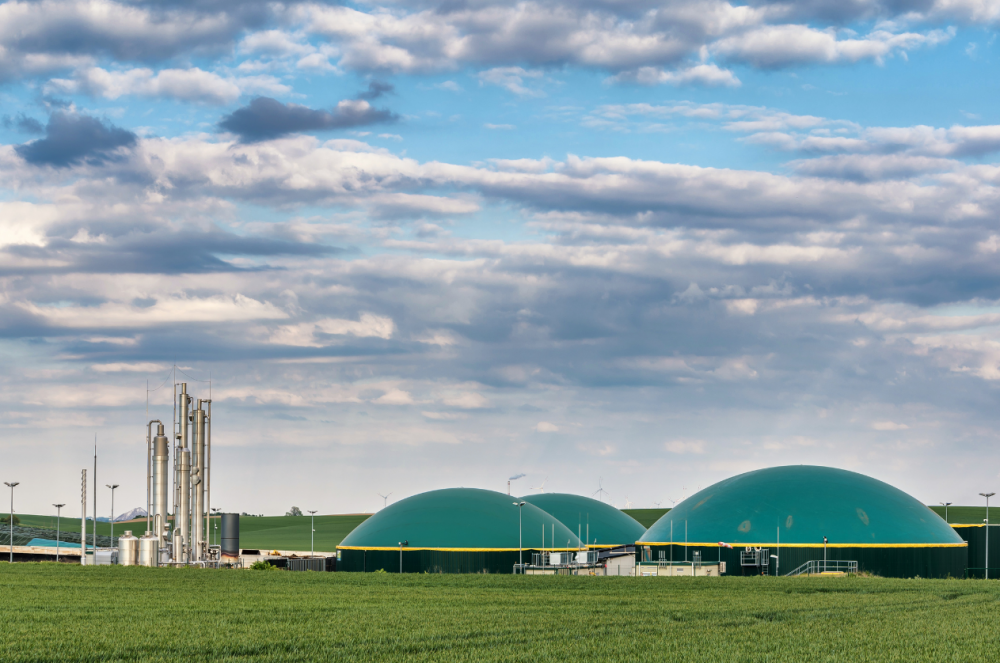With the launch of the Global Methane Pledge, the world has become more aware than ever of methane. We know that methane is emitted by many human activities—especially the agriculture, fossil fuel, and waste sectors—and that it contributes significantly to near-term climate change. Fortunately, we are also learning about the solutions to methane emissions, many of which are already technologically and economically feasible.
What is methane? Click here for a brief introduction to this powerful greenhouse gas.
How to Reduce Methane Emissions
There are many technologies that are available to help each industry with methane reduction, some old and some very new. Here are ten inspiring examples:
Agriculture
The primary source of agricultural methane is cattle. Their digestive systems produce methane, which is mainly exhaled through their nose and mouth. Methane is also generated by manure, which may be stored in large quantities. According to the Global Methane Assessment, agriculture is responsible for about 40% of anthropogenic methane emissions.
1) GlasPort Bio, a biotech company, is currently developing an additive named GasAbate N+. This can be added to stored cow manure to inhibit microbial activity, reducing the production of methane while retaining more nutrients for use as fertilizer.
2) ZELP has created a wearable filter, to be worn by cows like a mask. The filter neutralizes methane as they exhale while also monitoring both methane emissions and information on the cow’s health.
3) Bar 20 Dairy in Kerman, California, uses a biodigester to capture the methane from its cows’ manure, which then generates energy through fuel cell technology. This electricity will be used to power electric vehicles in a partnership with BMW.
Fossil Fuels
As natural gas is largely composed of methane, oil and gas production may lead to methane leaks at many stages of the supply chain. Coal mining also releases methane, with the fossil fuel sector as a whole contributing roughly 35% of human-caused methane.
4) LongPath Technologies has developed Nobel Prize-winning technology to detect methane leaks from oil and gas operations. Their laser networks allow for 24-hour-a-day monitoring so leaks may be addressed quickly.
5) Johnson Matthey developed technology to catalytically oxidize methane from the ventilation air in coal mines. This can be done at low temperatures and low cost, with a conversion rate of 99%.
Waste Management
The waste sector accounts for approximately 20% of anthropogenic methane emissions. Methane is produced when organic waste, such as food scraps and garden trimmings, decomposes in anaerobic environments like landfills.
6) TOVEN, a waste-to-energy firm based in Wuhan, China, mixes sewage sludge with food waste from restaurants to attain the desired level of organic matter. The combined waste undergoes co-digestion, producing natural gas (used to power the the factory and fuel local taxis) as well as solid fertilizer.
7) HomeBiogas produces anaerobic digesters for home use, allowing customers to convert their own food waste (and even human and animal waste) into gas that can be used for cooking. The liquid residues can then be used as fertilizer.
8) Too Good to Go reduces food waste by connecting customers with restaurants and shops that have more food than they can sell at full price. The customers get food at a reduced cost, the businesses can recoup some of their expenses—and everyone contributes to reducing methane emissions by keeping food out of landfills.
9) C-Wise is an Australian industrial composting company that uses mobile aerated floor technology to add air to compost piles. This allows oxygen levels to be closely controlled, increasing the efficiency of the process and improving the quality of the finished compost. Composting allows carbon and other nutrients to be returned to the soil.
10) UBQ Materials (that’s us!) takes unsorted household waste, including 100% of organics, and transforms it into a useful thermoplastic material that can substitute for conventional plastics. Thanks to UBQ’s novel conversion technology, all kinds of organic waste are kept out of landfills—leftovers, banana peels, chicken bones, and even dirty diapers. Each ton of UBQ™ prevents methane emissions equivalent to 11.7 tons of carbon dioxide.


